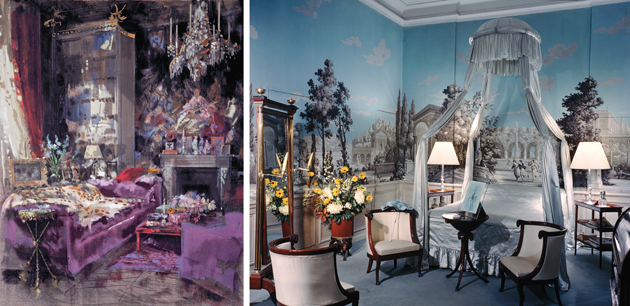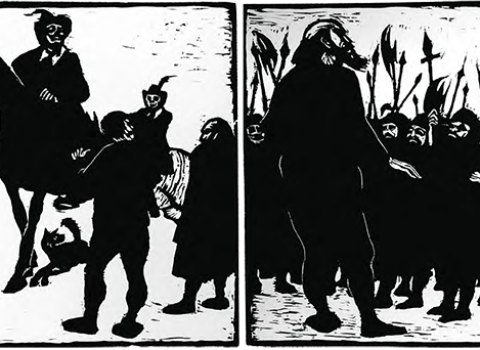An acquaintance once asked Mary Gaitskill and her then husband about their house, which sat at the edge of a college campus, surrounded by woods.
I said it was nice but that it had been partly spoiled for me by the loss of our cat. I told him the story and he said, “Oh, that was your trauma, was it?”
I said yes. Yes, it was a trauma.
“Lost Cat,” the essay from which this scene is taken, is an account of several traumas — Gaitskill braids together her desperate grief over sickly, spunky Gattino, who ran away, with recollections of hosting children through the Fresh Air Fund and the death of her father — but the real trauma is love itself. “Human love is grossly flawed, and even when it isn’t, people routinely misunderstand it, reject it, use it, or manipulate it,” she writes. She had hoped it would be easier to love an animal than a person. It wasn’t. At one point, after she has consulted a pet psychic and scattered her dirty clothes on the bushes to attract long-gone Gattino with her scent, she wonders if she has turned into someone who cannot be satisfied by life, someone who is “unable to accept what is given.” Then she thinks of the cat.
A lost cat would not ask itself if food and shelter were too much to expect, or try to figure out how much food and shelter were enough or who was the right person to give those things. It would just keep trying to get those things until the moment it died.
SOMEBODY WITH A LITTLE HAMMER (Pantheon, $25.95), a collection of twenty years of Gaitskill’s reviews and essays, is strewn with such pearls. “People tend to treat others as they treat themselves,” she remarks in a review of Gone Girl. From an article about the many book jackets that have wrapped Lolita: “Purity of feeling must live and breathe in the impure gardens of our confused, compromised, corrupt, and broken hearts.”
Readers of Gaitskill’s novels and short stories will recognize the shrewdness, and the themes. She gives depth to marginal female characters, the kind of women who are so thin or hunched over that you look right through them, if you see them at all. She is impatient with moral piety and despises the contempt that wears a mask of sympathy; an essay on Linda Lovelace takes aim at those who degrade the actress by simplifying her story of degradation, masochism, desire, and “enormous loneliness” into a moral fable. Simplification is an aesthetic as well as an ethical lapse: Gaitskill criticizes John Updike for putting a character into an interesting situation and giving him no complex thoughts about it. She often stages judgments as disagreements with family members or friends, who are made to play the fool, or, sometimes, with herself. “I rolled my eyes at this piece of clumsy cleverness,” she writes in a review of Dubravka Ugrešic’s novel Baba Yaga Laid an Egg, “and then got so engaged by it, I couldn’t stop reading.”

Left: Elsa Schiaparelli’s library, painted by Jeremiah Goodman. Courtesy Rizzoli. Right: The bedroom of Marcel and Hélène Rochas © André Kertész/Condé Nast via Getty Images
“The Trouble with Following the Rules,” an essay first published in this magazine in 1994, looks back on two violent sexual encounters. The second, in which Gaitskill was raped by a stranger who threatened her life, was “relatively easy to dismiss”; the first, which she no longer considers rape, haunted her for years. “I had, in a sense, done violence to myself,” she concludes of the sex she didn’t refuse while high on LSD. Gaitskill insists on taking responsibility for her feelings and experiences. But, as always, she is sensitive to vulnerability — her own and everyone else’s. “If thousands of Americans say they are in psychic pain, I would not be so quick to write them off as self-indulgent fools,” she writes, a sentence that reverberates with new meaning in the context of our current social-justice movements, which have been dismissed by some as whiny self-victimization.
So-called victim culture is not new, but it has rarely found a more thoughtful analyst. “This apparent desire to be a victim,” she wrote in a 2003 reflection on the movie Secretary, based on her short story of the same name, “cloaks an opposing dread”:
Americans are in truth profoundly, neurotically terrified of being victims, ever, in any way. . . . To be human is finally to be a loser, for we are all fated to lose our carefully constructed sense of self, our physical strength, our health, our precious dignity, and finally our lives.
Now that our bully in chief has turned the word “loser” into a punch line and his targets into punching bags, we would do well to keep our collective loserdom in mind — the inherent, unavoidable frailty that coexists with vigor and love. “A refusal to tolerate this reality is a refusal to tolerate life.”
You may find an hour of respite from the waking nightmare of American political life in P. Gaye Tapp’s HOW THEY DECORATED: INSPIRATION FROM GREAT WOMEN OF THE TWENTIETH CENTURY (Rizzoli, $55). It’s a coffee-table book that makes for pleasant bedtime reading — even if you don’t sleep in a lit à la polonaise, with satin curtains cascading from a dome like streams of light falling from a fringed chandelier, as the perfume empress Hélène Rochas did. (Louis XV’s Polish queen gave this hypnoconfection its name.) Or under a canopy of pink roses, gazing at matching walls, like the gardening expert Gabrielle van Zuylen. Or under a canopy of Porthault’s Pansy linens printed with blue butterflies, like the landscape designer and philanthropist Bunny Mellon. Why do wealthy women sleep with their heads covered? What horrors might befall them if they were forced to gaze directly at the ceiling? Such were my questions after perusing photograph after photograph of the dream castles inhabited by Lady Diana Cooper, Pauline de Rothschild, Babe Paley, Elsa Schiaparelli, Fleur Cowles, and Georgia O’Keeffe.
Come for the spreads, but try not to dwell on the insipid text. (“Rochas was passionate about cutting-edge style; more than making it plausible, she made it credible.”) The book is divided into four chapters — the dusted heirlooms of Legacy Style, the pricey dramatics of the Grand Manner, the bricolage of the Fashionably Chic, and Unconventional Eye, a category that (you guessed it) defies categorization. Inspiring women take risks that are just so: Schiaparelli is commended for balancing a television on a stack of eighteenth-century dictionaries, Evangeline Bruce for hanging paintings with ribbon. Thank goodness for Lesley Blanch’s mad orientalist fantasia, cluttered with tapestries and rugs and brocaded pillows and topped off with a soft, tacky leopard throw.
How They Decorated is filled with “pieces” that would look lovely piled atop a barricade. I admit it: I have no feeling for décor. Where others admire dapples of light on the eighteenth-century Italian parquet, I see only dollar signs. But try to be less vulgar than I. As Tapp reminds us,
While wealth afforded Mrs. Mellon the ability to buy anything she wanted, it was her innate ability to fuse disparate design periods, objects, and works of art into an incomparable aesthetic that made her unrivaled among her peers.
The book also reproduces a few paintings, and the spacious, gracious rooms of the ruling class are transformed by the medium: blurred into fantasy, softened into art history. Jeremiah Goodman’s smudgy painting of Rothschild’s living room makes her collection of chairs look positively inviting; Cecil Beaton’s rendering of Mona Williams’s Palm Beach living room turns cool glamour into charming hominess. The photographs, though, which are spookily emptied of inhabitants, do their best to help you forget that anyone lives like this. Just one bathroom is featured — Lady Diana’s, “done” in the Chinese style. The walls were painted with white trees and butterflies and hung with gilded mirrors. It was as big as most New York apartments, with room for a sofa, Regency chairs, a fireplace, and a lidded bathtub. Presumably she also had a toilet, but nothing that undignified, or grossly human, is in the picture.
A professor of mine used to describe books as “mental furniture”; he quipped that it’s worth making an interesting room to spend your life in. But in what period to upholster the ideational chaises? The mind of the German writer Joachim Kalka, it seems, is furnished in retro European style. In GASLIGHT: LANTERN SLIDES FROM THE NINETEENTH CENTURY (New York Review Books, $15.95), translated by Isabel Fargo Cole, he writes about Schiller, Wagner, Frank Wedekind, Alban Berg, and the German critic Wolfgang Menzel, as well as Balzac, Flaubert, Robert Louis Stevenson, and the Dreyfus Affair. Each “slide” is liberally adorned with references and apercus, and Kalka pays the reader the respect of expecting her to keep up. He darts from a discussion of dirty jokes to dynamite to anarchists to P. G. Wodehouse; in an essay on the engineer Max Eyth, who popularized the steam plow, he makes space for Jules Verne and H. G. Wells.
Kalka is interested in the nineteenth century as the last moment that technological progress could be conceived of as an unalloyed good — and the first moment that technology began to elude our attempts to harness it, which introduced a “discrepancy between our inventiveness and our moral imagination.” Fair enough, though the jahrhundert conceit is an arbitrary way to tie up an essay collection, as his introduction freely confesses. Nor do his essays bother to cohere. More memorable than any theme or argument are his clever observations. “We are already beginning to gaze back yearningly at the industrial labor that was seen for so long as the epitome of alienation.” “Balzac, the great diner, never provides a detailed description of a grand dinner with all its accessories.”
Sometimes Kalka skims too quickly over an interesting tidbit; in his investigation into “bucolic anti-Semitism,” I would have liked to hear more about the cheerfully anti-Semitic postcards sold in German spa towns. The title essay shifts from remarks on the London fog and the relatively recent phenomenon of urban light and blossoms into an erudite reading of Lulu, Berg’s opera based on the Wedekind plays. Kalka fixes on the moment that Jack the Ripper, having done away with our savage heroine and her lover, washes his hands of the bloody deed. “I’m such a lucky devil, damn it!” he says, gloating over his victims, whom he has dismembered offstage. But though he can wash his hands of his psychopathic predations, he cannot dry them. “These people don’t even have towels!” he exclaims.









































































































